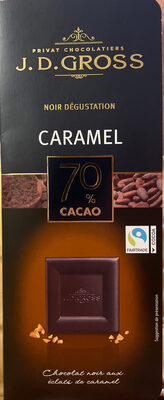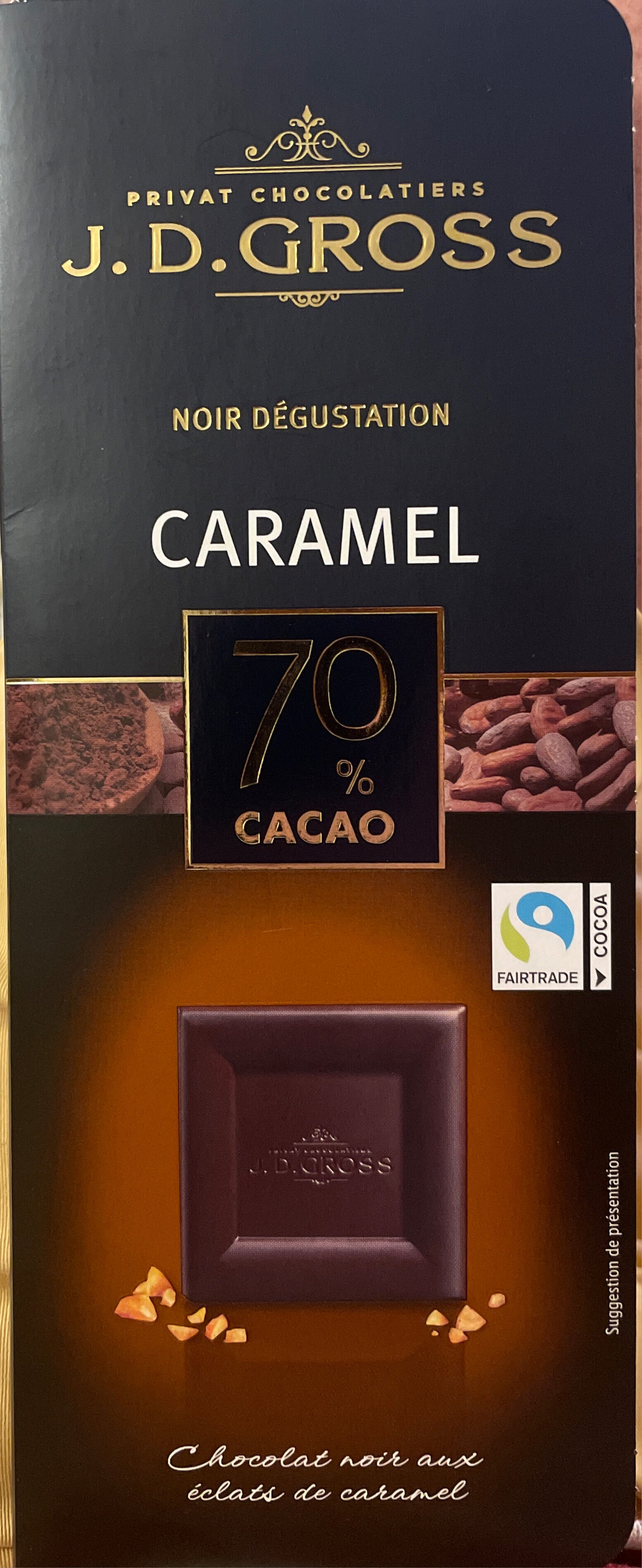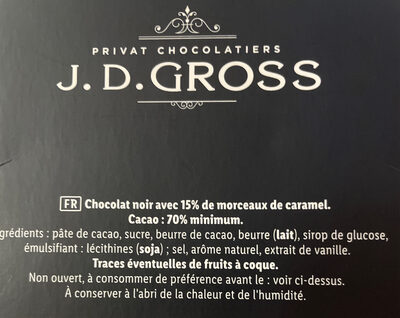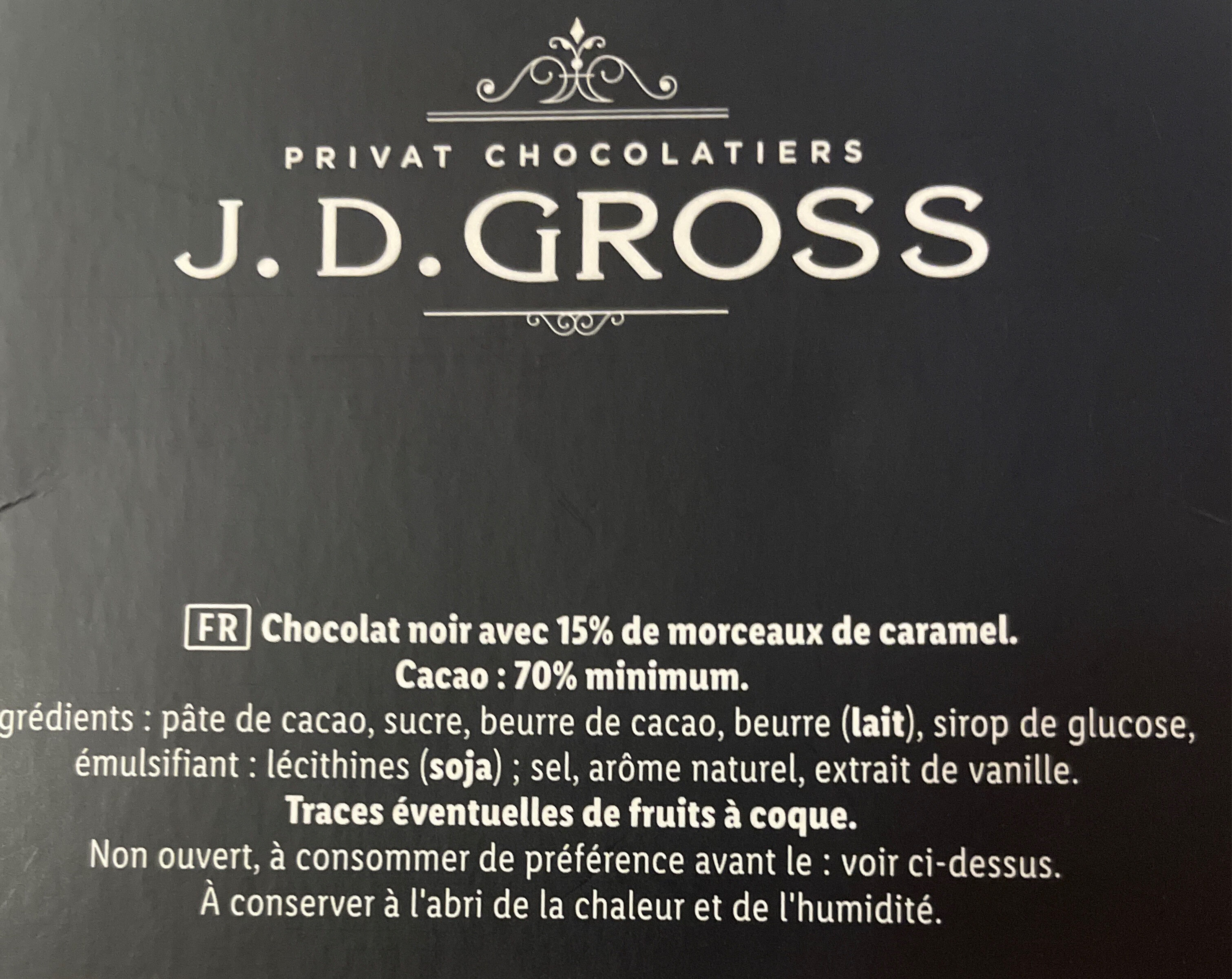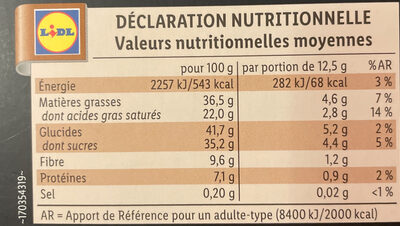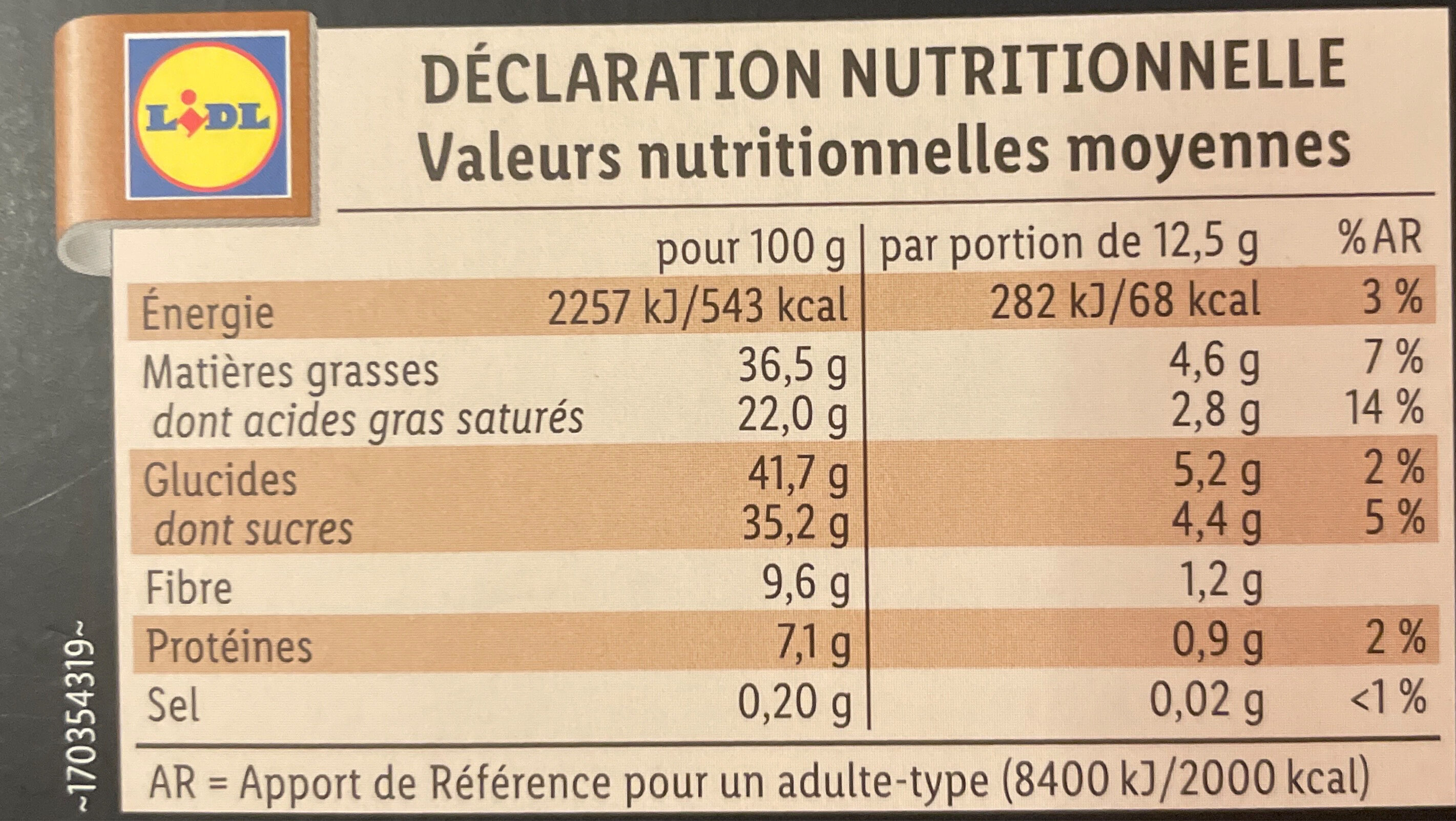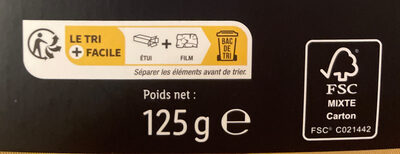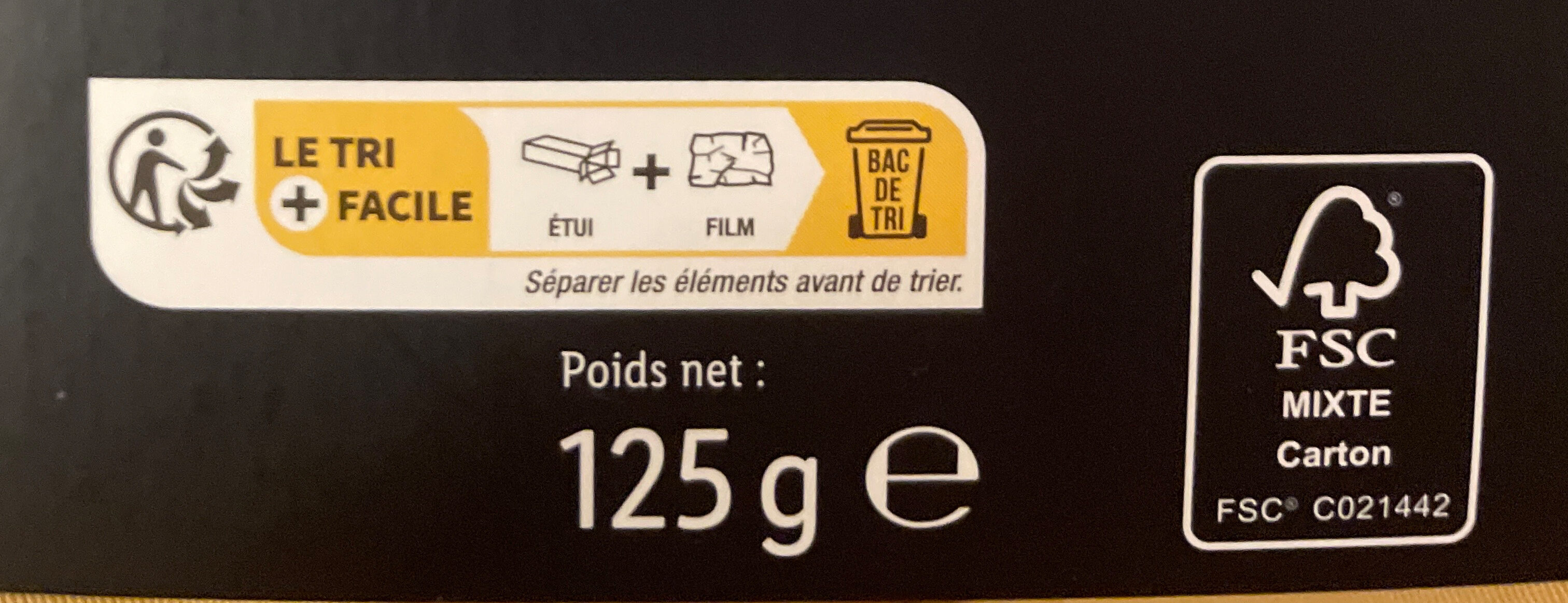NOIR DEGUSTATION 70% CARAMEL - J.D GROSS - 125 g
Ambiguous barcode: This product has a Restricted Circulation Number barcode for products within a company. This means that different producers and stores can use the same barcode for different products.
×
Barra-kodea: 20177218
Izen arrunta: Chocolat noir avec 15% de croquant de caramel
Kopurua: 125 g
Ontziratzea:
en:Cardboard, 21 PAP, 23 PBD, en:Point vert, en:Triman, fr:étui:carton
Markak: J.D GROSS
Kategoriak: en:Snacks, en:Sweet snacks, en:Cocoa and its products, en:Chocolates, en:Dark chocolates, en:Dark chocolate bar with more than 70% cocoa
Etiketak, ziurtagiriak, sariak:
Fair trade, en:German Agricultural Society, Fairtrade International, en:Green Dot, en:Made in Germany, en:Pure cocoa butter, de:Dlg-jahrlich-pramiert


Origin of ingredients: Ekuador
Traceability code: FSC-C021442
Dendak: Lidl
Saltzen diren herrialdeak: Frantzia, Alemania, Italia, Espainia
Matching with your preferences
Report a problem
Datuen iturria
Product added on by openfoodfacts-contributors
Last edit of product page on by chevalstar.
Produktuaren orria -gatik editatua aleene, alex-off, date-limite-app, ecoscore-impact-estimator, eduardo, foodrepo, foodvisor, freiby, ijoseba, inf, istilli, kiliweb, livlakaemper, maschm, naruyoko, nicole7, nutrinet-sante, off-replace-bot, packbot, planteuser, quechoisir, roboto-app, sebleouf, smoothie-app, tacite, twoflower, yuka.U0kxZkR2VVIvS0l6bGNNdXdTeUw2OGd0NjhHTlFVcnREdVlUSWc9PQ, yuka.UWJrOUxmMGVodlVNdE04NW95N3ZwZjlzdzcrTVhrM3BEL2NPSVE9PQ, yuka.V1k0bk5mdGQrUElKdWMwMDQwNkZxdkozeUxDWUIwT0tkZFVLSWc9PQ, yuka.YTZjNUlhTURuUElMbmNkbXB3N1g2L1pKMjdLMFVHN3VJZElJSVE9PQ, yukafix.
